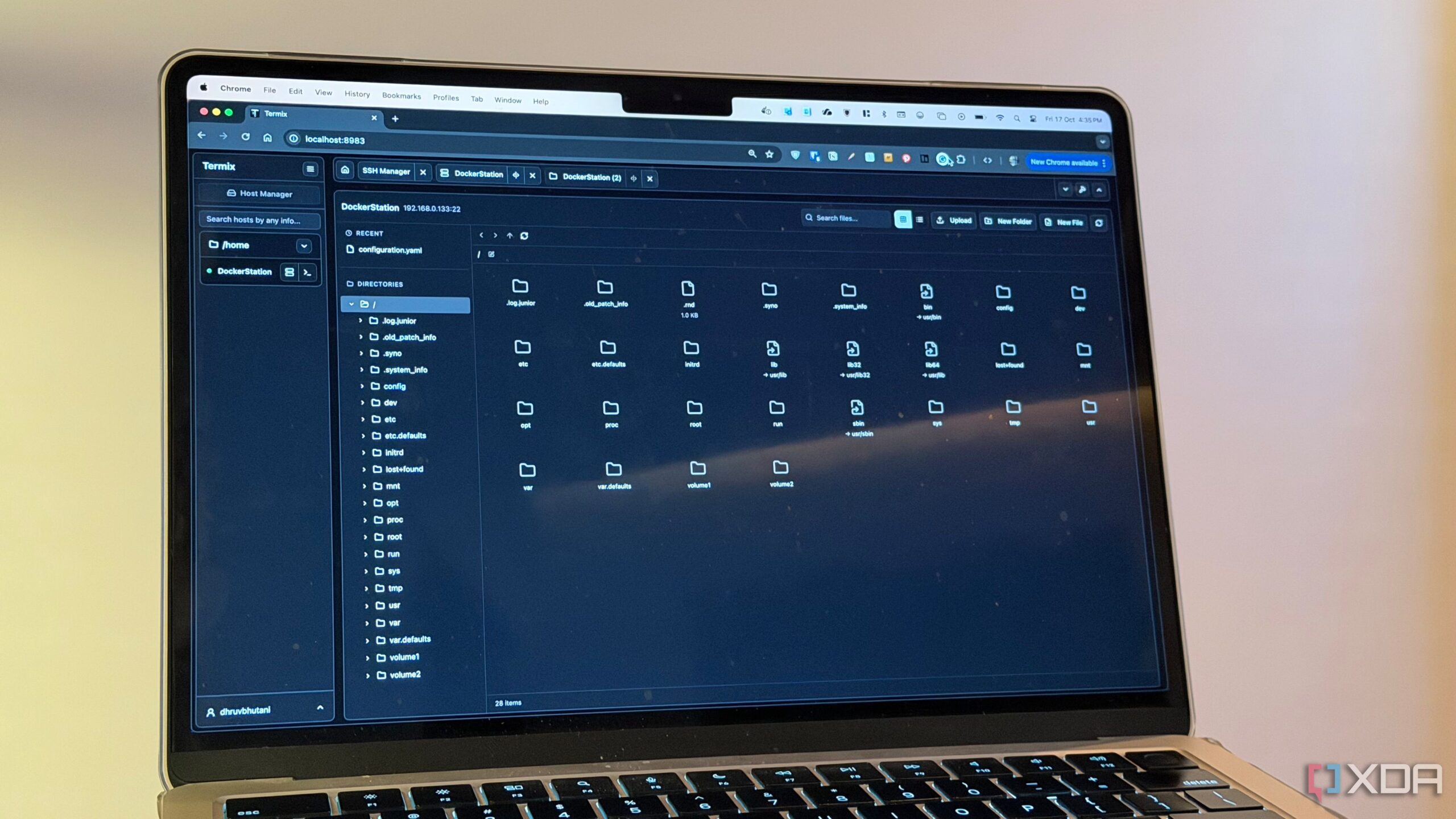Managing servers often requires the use of Secure Shell (SSH), a protocol that allows users to control remote machines. A new application, Termix, aims to enhance this experience by providing a browser-based platform for SSH access, integrating file management capabilities directly into its interface. This self-hosted, Docker-based solution simplifies server management by offering a cohesive environment for both terminal and file operations.
Revolutionizing Server Management with a Unified Interface
Termix operates as a Docker container on devices such as your home server or Network Attached Storage (NAS). Once configured, users can access a streamlined web dashboard featuring tabs for terminal access, file browsing, and connection management. This single-window approach eliminates the need to switch between multiple tools, making server management more efficient.
What sets Termix apart from conventional SSH tools is its robust file management system. Through a secure SSH tunnel, users can navigate remote directories as if they were local. This functionality allows for the opening of folders, moving or renaming files, and even drag-and-drop uploads. The user experience closely resembles that of a traditional desktop file explorer.
Termix also includes basic file editing capabilities. Users can open scripts or configuration files within an integrated interface that features syntax highlighting and other familiar elements, making it easier to implement changes. This feature has proven invaluable for many users, streamlining the process of managing server settings.
Convenience and Functionality in Server Management
Another notable feature of Termix is its support for multiple host connections. Users can group servers and securely store connection information, allowing for quick access with just a single click. This functionality is particularly beneficial for individuals overseeing numerous server environments or working with multiple Raspberry Pi devices.
While Termix is efficient for simpler file management tasks, it may not be the best choice for handling large files or extensive folders, as performance is ultimately limited by network speed and the SSH protocol itself. However, the application provides a detailed graphical user interface that tracks upload progress, enhancing the user experience.
Built on a modern technology stack that includes React, Tailwind, and Typescript, Termix delivers a fluid and responsive interface. This design choice significantly contributes to its appeal among users who prioritize aesthetics alongside functionality.
For those who routinely manage servers, Termix serves as a powerful tool for both SSH access and file management. It consolidates a variety of features into one application, reducing the need for constant tool-switching and enhancing productivity. The application also supports tunneling, enabling users to forward ports, manage keys, and establish secure connections between machines.
In addition to its core functionalities, Termix offers a micro-dashboard that displays essential server statistics, such as memory and storage usage. This feature is particularly useful for monitoring server performance in real-time.
Ultimately, Termix does not seek to reinvent SSH but rather to refine the user experience associated with it. By combining traditional terminal commands with a modern file explorer and text editor interface, Termix makes remote server management more accessible and efficient. For anyone involved in server administration, this application is a worthwhile addition to their Docker stack.








































































